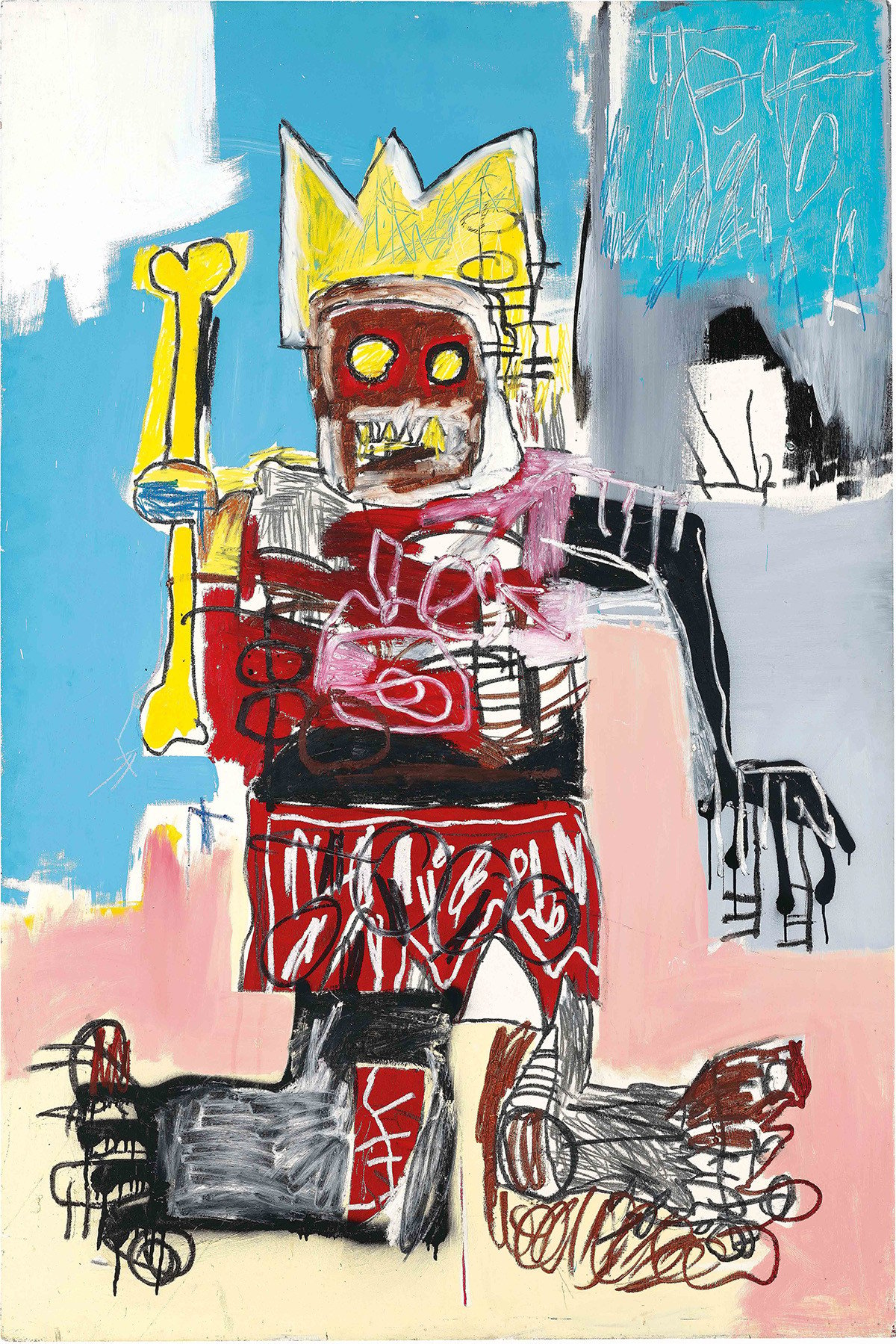
No artist in the history of New York City quite exemplifies the grit and determination of the 1980s quite like Jean-Michel Basquiat.
In a first for Austrian audiences, Basquiat’s legacy is being given a major retrospective at the Albertina Museum in Vienna. The show includes iconic pieces such as La Hara (1981), a skeletal portrait of a police officer that sold at auction for $35 million in 2017, and Self-Portrait (1983).
The exhibition is being billed as a legacy-defining one for the artist. More than 50 major works have been lent from public and private collections, including Basquiat’s estate (the artist’s sisters, Lisane Basquiat and Jeanine Heriveaux, even attended the opening), the Nicola Erni Collection, and art dealer Thaddaeus Ropac.
Born in Brooklyn in 1960, to a Haitian father and Puerto Rican mother, Basquiat started developing his artistic style as a teenager, first conceiving the graffiti moniker SAMO in the 1970s with a high school friend, Al Diaz.
Basquiat’s later work, which many critics defined as “neo-expressionism,” was deeply influenced by these early experiences creating street art, and by the rap and punk music scenes he was a part of. In 1979, together with filmmaker Michael Holman, for example, Basquiat formed an experimental band called Gray.
The Albertina’s show unpacks the artist’s roots and follows his meteoric rise in the art world, from being the youngest ever participant at Documenta in 1982, to his relationship with other cultural superstars like Madonna and Warhol, through to his untimely death of a drug overdose in 1988, age 27.
“Basquiat: The Retrospective” is on view through January 8, 2023, at the Albertina in Vienna. See more images from the exhibition here.
Visitors attend the “Basquiat: The Retrospective” exhibition preview at Albertina on September 8, 2022 in Vienna. Photo: Heinz-Peter Bader/Getty Images.
Visitors attend the “Basquiat: The Retrospective” exhibition preview at Albertina on September 8, 2022 in Vienna. Photo: Heinz-Peter Bader/Getty Images.
Visitors attend the “Basquiat: The Retrospective” exhibition preview at Albertina on September 8, 2022 in Vienna. Photo: Heinz-Peter Bader/Getty Images.
Visitors attend the “Basquiat: The Retrospective” exhibition preview at Albertina on September 8, 2022 in Vienna. Photo: Heinz-Peter Bader/Getty Images.
Visitors attend the “Basquiat: The Retrospective” exhibition preview at Albertina on September 8, 2022 in Vienna. Photo: Heinz-Peter Bader/Getty Images.
Visitors attend the “Basquiat: The Retrospective” exhibition preview at Albertina on September 8, 2022 in Vienna. Photo: Heinz-Peter Bader/Getty Images.
Visitors attend the “Basquiat: The Retrospective” exhibition preview at Albertina on September 8, 2022 in Vienna. Photo: Heinz-Peter Bader/Getty Images.
Visitors attend the “Basquiat: The Retrospective” exhibition preview at Albertina on September 8, 2022 in Vienna. Photo: Heinz-Peter Bader/Getty Images.
Visitors attend the “Basquiat: The Retrospective” exhibition preview at Albertina on September 8, 2022 in Vienna. Photo: Heinz-Peter Bader/Getty Images.
Untitled (1982) by Jean-Michel Basquiat. Museum Boijmans Van Beuningen, Rotterdam. Photo: Studio Tromp; © Estate of Jean-Michel Basquiat, licensed by Artesar, New York.